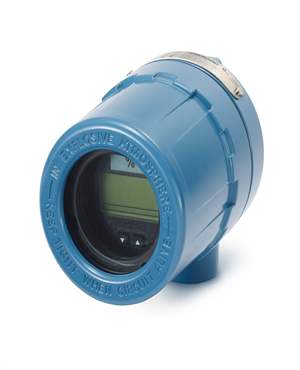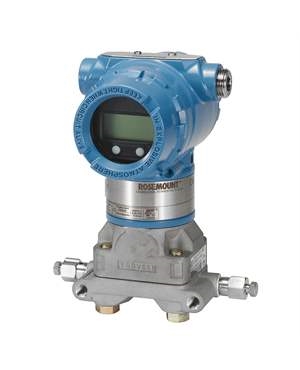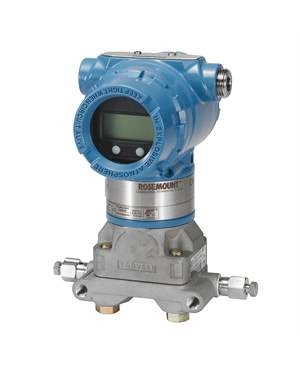HART Communication Protocol: Overview, Working Principle, Benefits in Industrial Automation
Brian Craig
September 07, 2020
Today, various types of smart field devices are used as a part of industrial automation systems. It would be difficult for a field engineer or authorities to monitor every device installed in a factory. This type of monitoring is usually achieved using smart devices, which enable data transfer between various connected devices within and outside the factory to the main monitoring system. The data is used to streamline factory automation and process control. For several years, the data communication was accomplished through 4-20 mA loop transmitters. The data was converted into 4-20 mA current on a two-wire loop system. The main disadvantage of this system is it can monitor only one process variable at any time. This is where HART-enabled smart devices such as HART transmitters can make a difference. Today, HART protocol has become an industry standard for industrial automation. This post analyzes HART protocol, its working, benefits, and everything else you want to know about it.

What is HART Technology?
HART is an abbreviation of Highway Addressable Remote Transducer, and this technology was introduced in the 1980s. Built on the Bell 202 standard, the HART protocol facilitates digital data or signal transfer over analog wiring systems. Today, more than 30 million devices across the world are powered by HART protocol. Owing to its various benefits, the HART protocol has become an industry standard for establishing communication between host systems and smart field devices. The host systems may be handheld communicators or monitoring systems, or PLC/DCS systems. Unlike the traditional 4-20mA protocol, the HART technology is a bi-directional communication protocol. How does this protocol work? Read the next section to know the answer.
How does HART Communication Protocol Works?
As said before, HART technology is built on Bell 202 standards and works on the frequent shift keying (FSK) principle. The digital HART signal is made of two frequencies – 1,200 Hz, as well as 2,200 Hz. The 1,200 Hz signal represents bit 1 and the 2,200 Hz signal represents bit 0. The data transfer takes place when sine waves of these frequencies superimpose on DC analog signal cables. During this transfer the 4-20 mA signal is not affected because the average value of an FSK signal equals to zero. Generally, the HART protocol can communicate 1200 bps, without interfering with the 4-20mA signal. This enables the host application to receive two or three digital updates in a second, from a smart device.
The HART protocol supports two communication channels at a time –4-20 mA analog signal and digital signals. The digital signals can be any information such as the operational status of the device, diagnostics, any measured value, and so on.
The HART technology is distinguished as a master/slave protocol because the slave device (a smart device) only works when a master device (computer or any other host device) is connected to it. The protocol is used in two modes, which is discussed in detail in the next section.
Over the years, wireless HART technology known as Wireless HART has gained popularity. This technology requires no connection cables, rather it makes use of a digital parameter range. It has become the first wireless communication standard for industrial automation.
What are the Modes of HART Communication Protocol?
HART-enabled devices can be operated in either of these two network configurations :
Point-to-Point:
In this configuration, the traditional 4-20 mA signal is used to define one variable, whereas other important process variables would be communicated through digital signals over the HART protocol. In this way, the HART digital signal offers an access to secondary variables as well as important data pertaining to commissioning, maintenance, and diagnostics and so on. The HART protocol can support up to two masters – primary and secondary masters. The primary master can be programmable logic controllers (PLC), distributed control systems (DCS), and a personal computer (PC). The secondary masters can be any PC or a handheld terminal. Transmitters, controllers, and actuators are a few slave devices normally connected to the primary or secondary master. The primary and secondary master devices do not interfere in each other’s functioning.
Multidrop:
It is a burst communication mode, where only one slave device is used to broadcast a HART reply message. This mode of HART communication uses only a pair of wires. If possible an auxiliary power supply and safety barriers may also be added. All process variables are digitally transmitted. All field devices in this mode have polling addresses >0. The current is fixed at 4-20 mA.
What are the Benefits of Using HART Protocol for Industrial Automation?
HART-enabled devices allow users to:
- Make the best use of device data to optimize their operational capabilities.
- Minimize the downtimes due to equipment failure by identifying the potential problems before they occur.
- Cut down on device maintenance and inventory costs.
- Reduce wait times between the problem identification and problem resolution.
- Improve SIL/safety integrity levels through advanced diagnostics.
- Automate record keeping for compliance purposes.
Owing to its increasing popularity, the protocol has been updated several times since the introduction. It is often updated such that the backward compatibility is ensured. As said before, HART-enabled transmitters, especially HART pressure transmitters are widely used in various process industries for pressure measurement. The pressure transmitters are configured to HART communicator for achieving desired performance. Rosemount and Foxboro are two prominent brands offering HART pressure transmitters. You can find them with trusted suppliers like The Transmitter Shop. The company offers one of the largest selections of reconditioned and new surplus HART-enabled Rosemount transmitters like Rosemount 3051c, Rosemount 3051t, and Rosemount 333 HART Tri-Loop signal converter as well as several other Foxboro transmitters with HART protocol and other communication protocols.
Related Posts
- What are the Steps Involved in Calibrating Pressure Gauge?
- All Important Questions on Reconditioned Transmitters Answered
- Is Remanufactured Transmitter a Better Option than a New One?
- Differential Pressure Transmitters: How Do They Help in Flow Measurements?
- 3 Whats that Explain How Often You Should Calibrate Pressure Transducer
- Guidelines for Troubleshooting Pressure Transducers
- Learn How to Calibrate a Pressure Transmitter – II
- Learn How to Calibrate a Pressure Transmitter
- Know Three Interesting Uses of Pressure Transmitters
- Things to Check before Buying a New Pressure Transmitter
- A Look at Various Types of Industrial Transmitters – Part II
- A Look at Various Types of Industrial Transmitters Part I
- All Questions on Smart Transmitters and their Calibration Answered
- 3 Major Pressure Transmitter Technologies That Made the Device Popular
- An Unconventional Guide to Selecting the Right Pressure Sensor
- Factors To Be Considered While Differentiating $40 and $400 Pressure Transmitters
- Tips to Augment the Performance and Service Life of Pressure Transmitter
- Factors of Consideration When Choosing Pressure Transmitters
- 5 Most Popular Pressure Transmitter Technologies
- Tips to Improve the Performance of Pressure Sensors
- Factors to Consider When Choosing a Pressure Transmitter Manifold
- Safety Tips for Differential Pressure Transmitter Operation
- Impact of Shock and Vibration on Pressure Transducer
- Rosemount 3051S vs 3051C Transmitter – What is Your Choice?
- Rosemount 2088 Vs Rosemount 3051 – A Few Points of Differences Discussed
- Difference in Conventional Transmitters and Smart Transmitters
- How to Choose Diaphragm Seals for Your Application?
- How to Select Pressure Transmitter for Your Application?
- Remote Seals: Significance, Working Principle & Applications
- How Do You Calibrate A Flow Transmitter?
- What is Absolute Pressure Transmitter & how does it work?
- HART Communication Protocol: Overview, Working Principle, Benefits in Industrial Automation
- Absolute and Gauge Pressure Transmitters - Overview and Working Principle
- Flow Meter vs Flow Transmitter: Know the Difference
- How Do You Test for 4 to 20mA Signal in a Pressure Transmitter?
- Multivariable Transmitter: What Is It and How Does It Work?
- Pressure Transmitters vs. Pressure Transducers: Learn the Differential Characteristics
- Procedure to Calculate Accuracy of Pressure Transmitter Discussed
- Testing Pressure Gauges: Processes of Verification Test and Functional Test
- An Ultimate Selection Guide for Flow Transmitters
- The Benefits and Challenges of HVAC System Balancing
- Fluid Flow Isolation Techniques for Pressure Instrumentation
- Understanding Pressure Ranges and Units for Fluid System Monitoring
- Understanding the Impact of Pressure Fluctuations on Drying Performance
- Monitoring and Controlling Energy Production in Power Plants
- Common Challenges in Air Flow Measurement and How to Overcome Them
- Pressure Monitoring in Pump Systems: A Comprehensive Guide
- Exploring Density and Viscosity Measurement in Industrial Processes
- Pneumatic Pressure Controllers: A Safe Choice for Hazardous Areas
- A Practical Guide to Vacuum Measurement and Operation
- 4-20 mA Transmitter Wiring: Understanding 2-Wire, 3-Wire, and 4-Wire Systems
- Flow Measurement Challenges in Subsea Operations
- Flow Measurement Challenges in Subsea Operations
- Pressure Sensing Sensor Modes of Measurement Key Differences and Benefits
- Electromagnetic Flow Sensors for Abrasive and Corrosive Fluids
- Mass Flow Meters and Their Working Principles
- Best Explosion Proof Switches for Hazardous Environments
- Best Explosion Proof Switches for Hazardous Environments
- Furnace Flame Sensor Faults Everything You Need to Know for Safe Operation
- Pneumatic Pressure Controllers: A Safe Choice for Hazardous Areas
- A Practical Guide to Vacuum Measurement and Operation
- Understanding Electrochemical Detection: Principles, Techniques and Environmental Application
QUICK ENQUIRY







